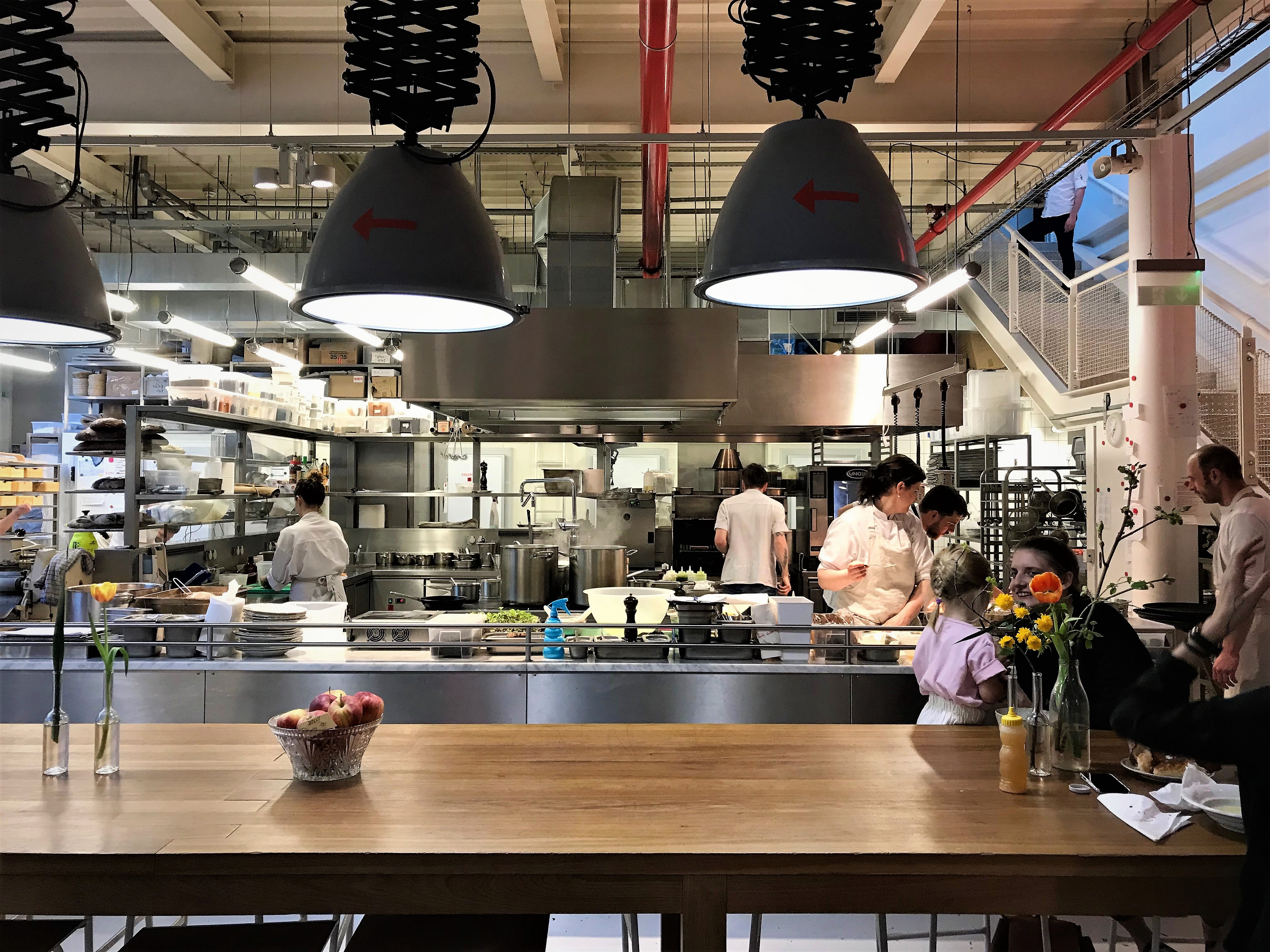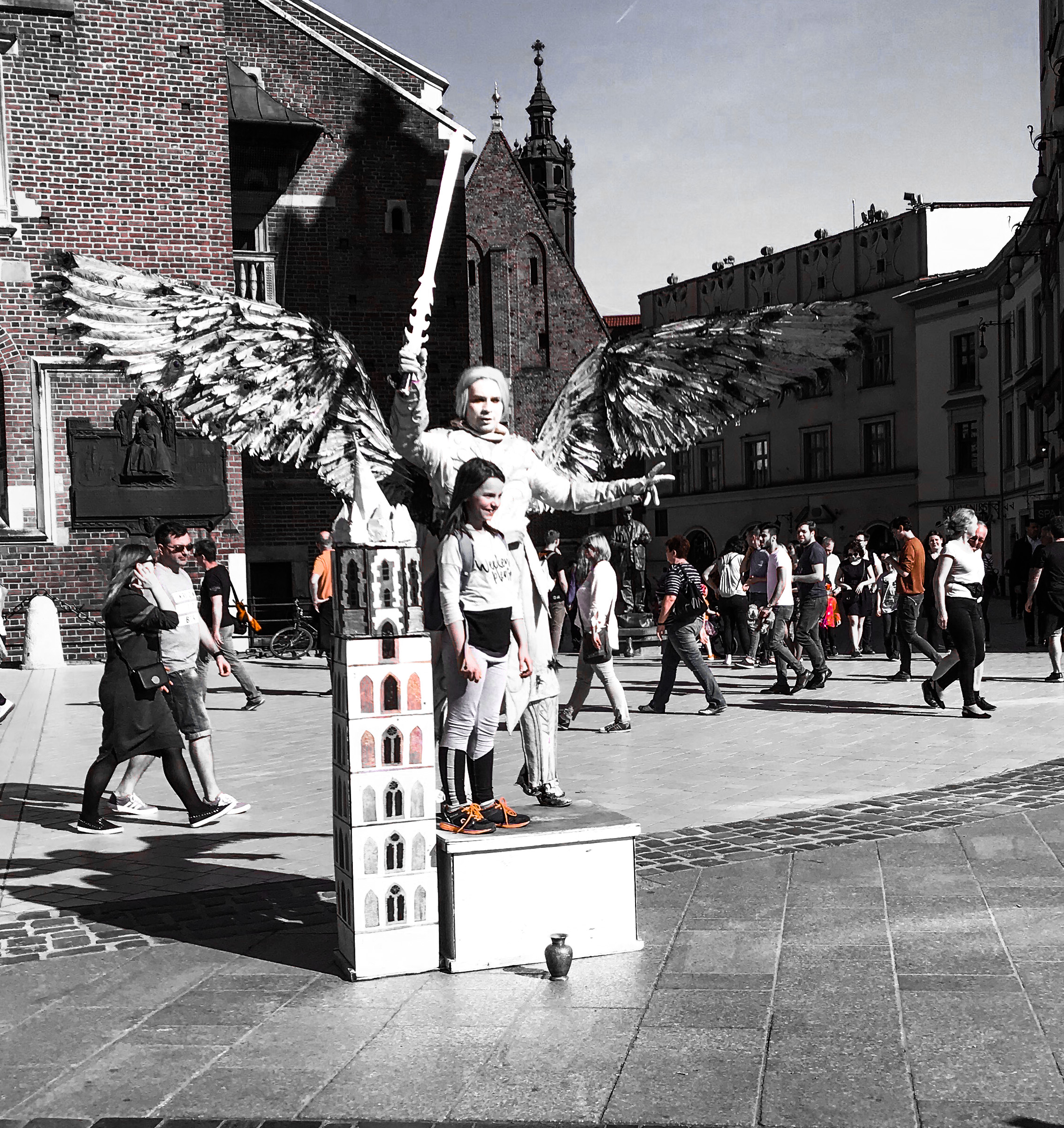
Sure, we know you came to Prague to see the sights. But we offer a different angle. An opportunity to stop in the tracks for a few hours, get off the beaten path, and just be. Be among the locals. Get a better understanding of who the Czechs are. What they believe in. Where are the differences, and what we have in common. Of course, we serve what we think is some of the best Czech food and drinks. But that’s just the start to understand the wider context. To understand how we live.
A Taste of Prague was our first food tour and it was delicious, informative, entertaining, yummy, stupendous, and my mouth is salivating as I write. Marketa, tour guide, spent five hours (imagine Thanksgiving dinner lasting five hours with 20 courses) wining and dining four couples through the culinary landscape of Prague. We walked two miles, took a tram to the suburbs, ate at five restaurants, and sampled plum brandy from a flask on the sidewalks of Prague.
Let Marketa take you on a guided tour, unfortunately, without her narration of childhood stories, Prague food history, including food and life under Communism.

The couples are from Toronto, Canada (teaching at a university in Ireland for six years); Rochester, NY; and New York, NY. Interestingly two of the wives were child psychologists and the other two (including me) were psychology majors in college. Can we surmise that female psychology majors like eating and drinking while hearing stories of growing up in Prague?

From Marketa’s follow-up email:
WHAT DID WE HAVE YESTERDAY?
Mysak Pastry Shop and Cafe
We started with the shrimp „chlebicek“, open-faced sandwich and choux pastry Venecek with vanilla buttercream and sugar glaze at Mysak pastry shop and cafe at Vodickova 31.
Before Communism the Czech Republic was 10th in the world for industrial production and there were wealthy people and many restaurants serving Czech food influenced by French and Italian cooking–Mysak was one restaurant. They were forced to close during Communism and have reopened with many of the same recipes used at the height of the food scene before Communism.

Kantya Restaurant and Butcher Shop
We tried Pilsner Urquell beer, grilled beef sausage, steak tartare, grilled Prestice pork belly with pickled vegetable and Bramborak: potato pancake with marjoram at the Kantyna restaurant and butcher shop. Kantyna is located at Politickych veznu 5.



It was my first time for steak tartare. Take a home grown garlic cloved and rub it on toasted bread then spoon on the steak tartare. Divine!

Lokal Pub
We had Kozel dark lager (the pours we discussed were “Hladinka”, “Šnyt” and “Mlíko”), fried matured cheese with tartar sauce, marinated Hermelin cheese with pickled onions and peppers, beef shin goulash and schnitzel served with potato salad at the Lokal pub over at Dlouha 33.
Potato salad is served on special occasions, especially at Christmas, in the Czech Republic. It tasted like a traditional American potato salad with mayo and relish.




Marketa swears this is true: The average Friday night after work beer consumption/person is 9 (yes, nine) mugs. Think about this: For my one beer someone has to drink 17! Marketa says that is why on the menu there are: Things that go with beer

Beer Pours
Explained by Lukas Svoboda, who won the Pilsner Master Bartending championship in 2010 against 2,500 bartenders from around the world. He now is beer caretaker at all the Lokal restaurants.
Hladinka (the diminuitive form of “water level”) is the standard style, with about one quarter foam. The foam line should sit slightly below the half-liter mark, bringing the beer even with the line when it settles. A šnyt, according to Svoboda, should contain “two fingers of beer, three fingers of foam, and one finger of empty glass.”
Šnyt is an old-fashioned, mostly forgotten method of drinking beer. Historically, it was simply a small “cut” of beer and was typical for beer connoisseurs. It was also meant for someone who wanted less than a full glass, yet wanted to avoid the shame of ordering a small beer. Karel Čapek wrote a passage called “Ohrožený šnyt” or “Endangered šnyt” in which he complained that šnyt was disappearing from pubs. Lukáš is doing his best to bring it back.
The third type, mlíko, or a “milk” beer, is a glass almost entirely full of foam, except for a sliver of beer at the bottom. Mlíko is typically drunk at the end of the night. The foamy, sweet taste gives the drinker a jolt of energy before stumbling home.
Eska Restaurant (Michelin restaurant)
We had burnt potato in ash with potato and cream espuma paired with gin and tonic made from artisan OMG gin by Mr Zufanek and home-made tonic water, fermented red wheat with raw, sautéed and pickled mushrooms paired with 2016 Blauer Portugieser red wine by Mr Osicka and Kremrole: flaky pastry filled with soft meringue at the Eska restaurant (Pernerova 49).

The lowly potato elevated to a culinary masterpiece was, on average, our food tour’s favorite dish.



The homemade bread with homemade butter served on a rock. The food paired well with the ambiance/atmosphere of the restaurant.

Marketa: Seventy percent of Czech families go mushroom hunting and they are allowed to gather 9 kg/family. Below is a picture of her family basket the weekend before our food tour.

Krystal Bistro
We finished at Krystal bistro with plum dumpling served with poppy seeds, creme fraiche and toasted walnuts and Orechovka digestive made from walnuts and 9 spices. Krystal Bistro is located at Sokolovska 99.

Poppy seed is an important oilseed, whose cultivation has a long tradition in the Czech Republic and because poppy seed grown in the Czech Republic is of such high quality it is preferred to poppy seeds in other parts of the world. Global production of poppy seed is dominated by the Czech Republic, where it is a historically popular ingredient in local cuisine or traditional medicine.
The mounded finely granular poppy seeds (not the poppy seeds we are used to on bagels) made the dish and created a unique fruity, dusky flavor and texture along with the richness of the creme fraiche.
About The Author
admin
Related Posts
Spring has sprung in and out Krakow
The mimes are out in the Main Square. The ermines are out. Outdoor…
April 24, 2018Without atmosphere a painting is nothing
For twenty years the Netherlands’ greatest artist Rembrandt Harmenszoon van Rijn lived and worked in…
April 24, 2018




Rick Dye | 24th Apr 18
Chris—I continue to marvel at your writing and photography skills. In this post of yours, I found myself wondering if I somehow had gotten onto a commercial “foodie” magazine written by a professional writer. Then it hit me, the former high school yearbook editor is a professional writer and photographer. Well done, Girl!! Keep them coming. Patti and I are saving them so as to use them as a travelogue if and when we travel Europe someday… Thank you!!!
admin | 24th Apr 18
Thanks! Our time in Europe is winding down. One more trip: Netherlands, Belgium, and one stop in Germany. Unfortunately, we won’t make it to Frankfurt where I was born. We’ll save it for another year!
nanseeking | 24th Apr 18
OMG, Chris, what a feast you enjoyed on your food tour! That’s MY kind of tour. Such unique (to me) dishes you were offered. I trust you’re getting recipes so you can duplicate these foods for the BookBabes when you return. 🙂
admin | 26th Apr 18
The tour guide did send an email with links to Czech recipes. I probably can create the recipes, but not the atmosphere!